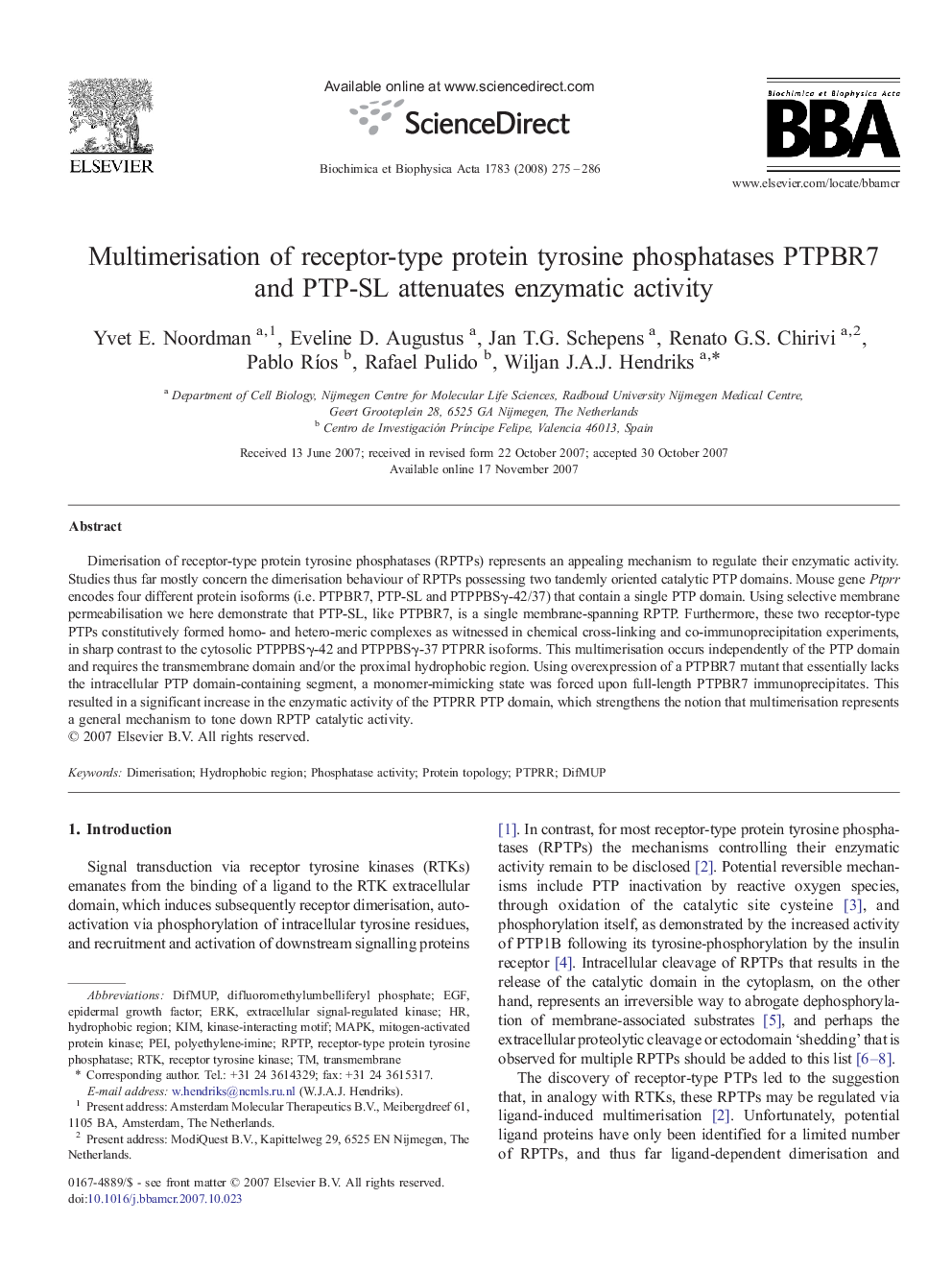| Article ID | Journal | Published Year | Pages | File Type |
|---|---|---|---|---|
| 10803011 | Biochimica et Biophysica Acta (BBA) - Molecular Cell Research | 2008 | 12 Pages |
Abstract
Dimerisation of receptor-type protein tyrosine phosphatases (RPTPs) represents an appealing mechanism to regulate their enzymatic activity. Studies thus far mostly concern the dimerisation behaviour of RPTPs possessing two tandemly oriented catalytic PTP domains. Mouse gene Ptprr encodes four different protein isoforms (i.e. PTPBR7, PTP-SL and PTPPBSγ-42/37) that contain a single PTP domain. Using selective membrane permeabilisation we here demonstrate that PTP-SL, like PTPBR7, is a single membrane-spanning RPTP. Furthermore, these two receptor-type PTPs constitutively formed homo- and hetero-meric complexes as witnessed in chemical cross-linking and co-immunoprecipitation experiments, in sharp contrast to the cytosolic PTPPBSγ-42 and PTPPBSγ-37 PTPRR isoforms. This multimerisation occurs independently of the PTP domain and requires the transmembrane domain and/or the proximal hydrophobic region. Using overexpression of a PTPBR7 mutant that essentially lacks the intracellular PTP domain-containing segment, a monomer-mimicking state was forced upon full-length PTPBR7 immunoprecipitates. This resulted in a significant increase in the enzymatic activity of the PTPRR PTP domain, which strengthens the notion that multimerisation represents a general mechanism to tone down RPTP catalytic activity.
Keywords
Related Topics
Life Sciences
Biochemistry, Genetics and Molecular Biology
Biochemistry
Authors
Yvet E. Noordman, Eveline D. Augustus, Jan T.G. Schepens, Renato G.S. Chirivi, Pablo RÃos, Rafael Pulido, Wiljan J.A.J. Hendriks,
